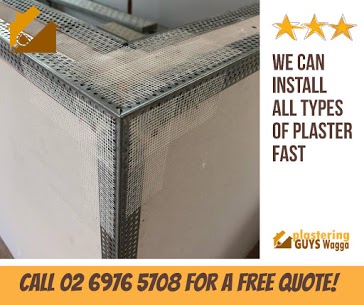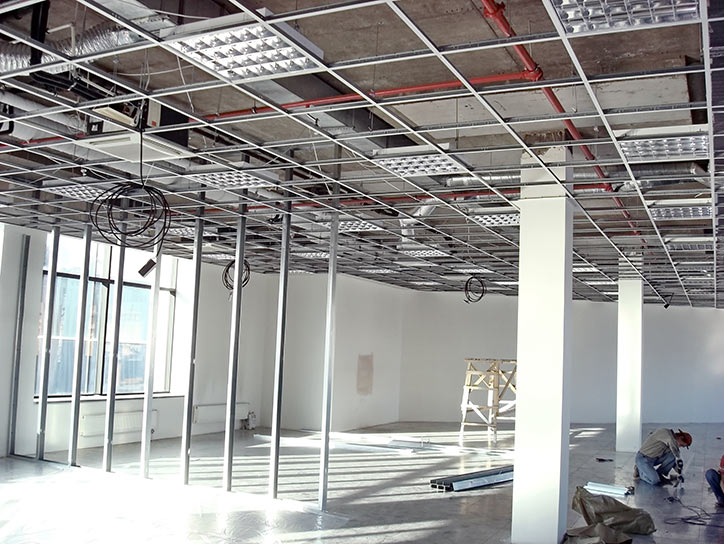What is the best way to repair plaster walls?
The process of creating drywall is complicated. It starts with calcined gypsum, which in turn becomes mixed and squeezed into a dense material before it’s flattened between two different layers of paper to create the core product. One side is solid and smooth, while the other side crumbles easily when touched due to its flimsy properties.
Installing drywall is a reasonably quick process compared to that of plastering. The boards are cut to fit the walls’ shape and secured in place with a corner bead for neat corners. Once installed, it’s simple enough for any amateur DIYer!
Professional painters know it’s essential to prepare the wall before painting correctly. This is done by taping seams, corners and other joints with paper or fibreglass mesh tape for a stronghold. Then three layers of joint compound are added that give the surface an even smoother finish following sanding after each layer dries. After this process, multitudes of paint types can go on without concern over peeling later!
Prepare the walls
Firstly, the walls must be prepared before they’re painted – otherwise, you risk having them peel off in time due to loose edges where boards meet at joints. The procedure starts with applying strips of either paper-mesh or glass-fibre tape across all junctions between panels.
You may be looking for a more cost-effective option than plaster, and drywall is the perfect alternative. Drywall installation has significantly less time and labour required compared to traditional methods of installing plaster walls. You can also enjoy some added fire safety benefits due to the water content in these boards, which provide superior insulation against heat damage during an emergency like a fire!
Drywall advantages
Drywall does have stacks advantages as an interior wall material, but it’s not indestructible. Drywall can certainly be damaged by the settling of the building or homeowner accidents. A common problem is nail pops and screw blasts when the head of these fasteners create a bulge that becomes visible through your drywall walls.
While there are definite benefits to using plastic sheeting in home construction projects such as insulation against outside noise or water leaks on rainy days; you must still handle this type of product with care so they do not become punctured by sharp objects like metal nails which could cause serious damage for those inside your property.
Appropriate anchors:
Not all holes and cracks are the same. Some holes can be deep enough to have no support from the other side, while others can be very simple hairline cracks. Applying a patch to repair walls does not solve the issue, rather complicates it sometimes. You need to apply appropriate anchors to hold the fillers in wall holes.
Paperworks and permits:
If you need some substantial changes made to your house, you may need permits. DIY or calling a local handyman means you have to get these permits yourself. Hiring a professional wall repair service means you get these benefits for free.
Drywall technology
In the recent past, drywall was considered one of the best construction materials. However, in light of new findings of its susceptibility to water damage and mould development over long periods, builders must take steps towards using boards with additives explicitly designed for better water resistance.
Thanks to the new, paperless gypsum drywall boards, people are going from being water sensitive and facing mould problems straight into a much better environment. Newer versions of this building material have made it more eco-friendly than ever before, making them an even greater choice for your next project!
Interior walls are the building blocks of your home. They shape its look, flow and feel. Knowing about plastering vs drywall vs Gyprock will help you decide which one best suits your lifestyle – whether it’s for a large project or something more minor like repairing holes in old wood frames with nails instead of screws to prevent damage from happening again!
Gyprock is also known as drywall, gypsum board and plasterboard.
For thousands of years, plaster was made from lime, sand, animal hair and other ingredients, and it was used to manifest a smooth interior finish on building walls and ceilings. Ancient Egyptian tombs feature paintings on the plastered walls that line their interiors, as did Roman buildings. A smooth, white finish for your home? Even up until the 1940s, many Aussie homes would have timber slats nailed across the wall studs and then covered in plaster (lath and plaster) to provide a professional painting surface.
Drywall, or plasterboard as it is also known, was invented in 1894. This innovation allowed for a smooth surface to be painted on without having the time-consuming process of using putty and paint every single wall. The boards were lightweight with an easy installation that would not require any more work than just pasting them up!
This discovery in the 1920s made Gyprock a household name, as it was one of the first building materials that allowed for quick and easy construction.
The evolution of Drywall
The USA company made further improvements to the product’s fire resistance and called their invention Sheetrock. Other advances followed in making this plaster less brittle, easier to handle, more lightweight, and quicker-drying than its predecessors. These new qualities of Sheetrock helped speed up building processes around the world as it became a popular choice for many countries’ construction projects.
Standard plasterboard is now manufactured using a process of sandwiching with a gypsum plaster layer inserted between two very thick sheets of purpose-built paper. There’s some variation to these processes and composites used, which can also result in the gyprock sheets being used for soundproofing or water-resistant purposes.
Who can you trust to install your Drywall?
At Plastering Guys, we are the go-to for plasterboard. From home jobs to commercial renovations and everything in between, you can trust us with your project! We have many years of technical and practical experience working hands-on with all types of projects throughout Wagga Wagga and the Riverina region – even those with moisture problems due to our expertise installing products that perform well under these conditions.
We want the smoothest of finishes for your new paint job. That’s why we use Gyprock to ensure you get a perfect, professional finish with ease. The joy of painting can be ruined if you don’t have the smoothest possible surface to work on.
Plaster Repairs: A DIY guide for the home and office
If you have plaster walls, it’s essential to keep them maintained. Keeping your walls in good condition is much easier when done regularly than waiting until there are problems with cracks or holes that need to be filled in.
Suspended Ceilings: What Are They?
Suspended Ceilings: What Are They? A suspended ceiling is a type of suspended structure that divides space into different levels. This suspended ceiling usually consists of several lengths of metal or wooden beams and horizontal surfaces suspended from the top, with columns in between to support each beam at regular intervals. Suspended ceilings are also […]
Reasons Behind The Cracks In Your Plaster
Reasons Behind The Cracks In Your Plaster Whenever structural elements get subjected to load, internal or external, and when the stresses exceed the permissible limits of pressure for that particular material upon which it’s constructed. This will lead to cracks in the structure and potentially catastrophic failures if not dealt with immediately. All houses should be designed […]




